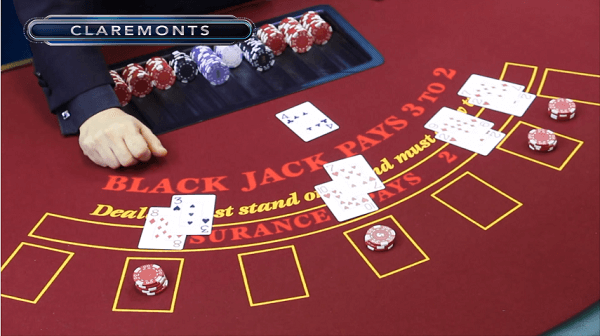Three popular bad strategies that you should never employ while playing blackjack card game include: never mimic the dealer, never bust, and never make an assumption of a ten in the hole.

All these combined are very bad blackjack card game rules in the UK. The rules above have been elaborated on below:
- Never Bust: from past analysis as a blackjack card game player, I made an assumption from my observation that a player would never hit a hard 13 or more. The assumption was made based on the correct basic blackjack strategy. Whenever you bust, you give the house an edge of 3.91%.
- Never try to mimic a dealer: Mimicking a dealer will only increase the house edge on the blackjack card game by 5.4%. For my analysis, I made an assumption after noticing that every time a player hit a 16 or less and stand when he/she had a card value of 17 or more, including a soft 17; he/she never split or doubled since the dealer was not allowed to do so.
What are some of the common untold blackjack card game rules?
A “hard” hand refers to a hand that either lacks aces or one that has all the aces forced to count as 1. In such a hand, choosing the ace to have a value of 10 will result in the hand busting. On the contrary, a soft hand is one which has, at least, one ace and can have a value of 1 or 10.
If you have a hard 11 or 10, double if your points are more than those of the dealer, considering the dealers ace as 11 points. Particularly, double with 11 against 2 to 10 and with a 10 against a 2 to 9.
If the strategy you are using says you double and you have more than three cards, or according to the table rules you are not allowed to soft double, go ahead and hit. However, if you have a soft 18, stand. If the strategy dictates you to surrender (16 vs. 10), but you cannot for whatever reason, hit the dealer.
Blackjack card games rules (UK)
Most of the times I’m sited at the blackjack tables, I tend to overhear a lot of bad gambling advice that other players give. Perhaps the most common misconception is the one that “your main objective is to get a total card value that is so close to 21 without going over it.”
No! Your main objective while playing blackjack is to ensure that you’ve beaten the dealer. To do this, you have to ensure that you’ve not bust (exceeded a total card value of 21) and the second goal is either to ensure the dealer has bust or you outscore him. Below are the full blackjack card game rules UK.

Blackjack is a game that is played with one to six decks with each of the deck having 52 cards. The value of the cards vary. Aces normally have a value of 1 or 11, while the Jack, King and Queen have a value of 10 and the other cards having a card value corresponding to their face value.
The value of the hand is the sum of the total points of each card you have in the hand. For example, if you have a Queen and a 9, your hand value is 19.

However, if you have an Ace and a 9, the value could either be 10 or a 19 depending on the value you choose for the Ace. If you have an Ace and a 10 point card, you have a blackjack. The blackjack outranks all the other 21-point hands.
After you place your bets, the dealer will deal two cards to every player and two cards to himself. One of the dealers cards will be dealt face up while the other one will be dealt face down. The face-down card is called the hole card.
If the face-up card happens to be an ace, the dealer is bound to offer you a side bet commonly referred to as insurance. This side bet usually pays on a ratio of 2:1 if the dealers’ hole card happens to be a 10-point card. However, insurance cards are optional and may not exceed half your original bet.
If the dealer's face-up card is an ace or a 10 (after giving insurance with an ace being the face-up card), he will peek at his hole card to see if it’s a blackjack. If it happens to be, he is bound to turn it immediately.
If he/she has a blackjack, all the bets placed by the player (except for the insurance) will lose, unless for players with blackjacks. In this case, a push will result. At a blackjack table, play starts with the player who is on the dealers left-hand side. The following are some of the options that players have:
- Stand: You stand with your card, deciding not to draw another
- Hit: you can draw another or more cards from the dealer. If however the drawn card(s) causes your total card value to exceed 21, you “break” or “bust” and consequently lose the bet.
- Split: if you have pairs or any other two 10-point cards, then you have the chance of doubling your bet and separate your cards into two independent hands. The dealer automatically deals each of the individual hand a second card. After this, you can decide to stand, hit or double the usual way.
- Surrender: During the surrender you forfeit half your bet while retaining the other half. This option is usually available after you have been dealt with the two initial hands and depending on the rules of the casino that you are playing at. In other situations, an early surrender is not accepted.

